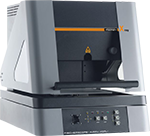Counterfeit Screening
To ensure that all products we sell are 100% authentic, we have set up a counterfeit detection and preventive process, as well as a zero-tolerance policy. All products must pass our rigorous inspection process before being accepted and prepared for shipment. Forte Technologies visually inspects all incoming materials for authenticity verification. Our visual inspection review includes:
Inspection L1: Visual Inspection
- — Verify manufacturer P/N, packaging, quantity and date code match PO
- — Verify if RoHS status is valid
- — Physical body marking inspection (looking for faded marking, mistyping, broken text, ink marking, etc.)
- — Physical conditions inspection (bent leads, scratches, chipped edges, etc.)
- — Taping condition inspection (dented reels, missing parts, etc.)
- — Verify moisture barrier protection verification (vacuum sealed, humidity indicator with specification)
- — Any visual irregularities
Inspection L2: Engineering Review
Materials identified as questionable during the visual inspection process are reevaluated by OEM engineers. Product sampling plans are also employed to ensure product consistency. Engineering review includes:
- — Review of Inspection L1 findings
- — Counterfeit databases referenced and updated
- — Label verification (bar code and label review)
- — Manufacturer logo and date code verification
- — ERAI counterfeit part data base review
Inspection L3: Testing
Testing is done to ensure that any questionable materials meet manufacturers' specifications. This work is performed by our contracted 3rd party laboratory with the following capabilities:
Scanning Electron Microscopes (SEMI)
JEOL 6340F semi in-lens field emission
Hitachi S4500 semi in-lens field emission
Surface Analysis
Noran Energy Dispersive Spectroscopy (EDS)
Focused Ion Beam System (FIB)
FEI 200xp systems (3)
Scanning Acoustic Microscopy (LEM)
Sonix UHR2000
Light emission microscopy (LEM)
Alpha Innotech 2000 w/ Enclosed Probe Station System
Micro Probe Station
Alessi high precision 8" stations
Optical Microscopy
Olympus (3000X) microscopy systems (3)
Leica (130X) stereo microscopy inspection systems (2)
Panasonic macro camera system
Package Decapsulation
Nisene D cap system
B&G 250 system
IC Depassivation System
March Instruments CS1701 RIE Plasma
X-ray Imaging
Phoenix- pcba/inspector real time x-ray system
Wire, Solder Ball, & Die Strength Test
Royce Instruments 552 Universal Bond Tester
Selected Area Polisher
Ultra Tec ASAP-1
Metallography
(6) Buehler variable speed wheels
(1) Allied high tech planar polishing system
Electrical Bench Equipment
Numerous assorted test equipment
Decapsulation Test
Some of our customers require decapsulation, X-Ray or solderability tests, each of which are described below.
Decapsulation is a technique for exposing the internal components of a package device. There was a time when a hot plate and concentrated nitric acid were capable of decapping integrated devices (IC’s). However, advancements in device packaging introduced new plastic encapsulants and the array of solder bumped external leads package designs.
Our jet etching systems are capable of exposing any package die without melting solder bumps, etching bond pads, or destroying external leads. The system sprays high temperature nitric and/or sulfuric acid through a fine diameter nozzle head. By computer control of the temperature, pressure, and time of the etching process a uniform etch cavity is created which exposes the IC.
Of course not all devices need the selectivity of our automatic decapsulator. For these devices we x-ray the device to measure the internal die, cut the proper die cavity in the package, and finally eye drop concentrated nitric acid in the cavity to remove the plastic from the IC.
Once decapped, analyses such as inspection, microprobe, FIB rework, delivering, or even retesting can be accomplished. The device will remain functional.
